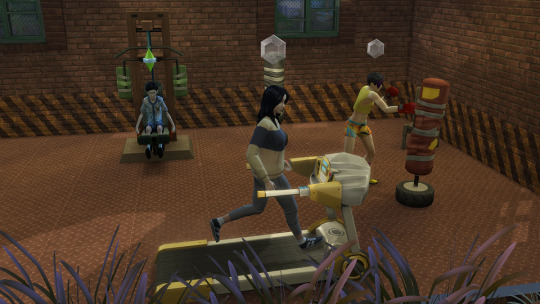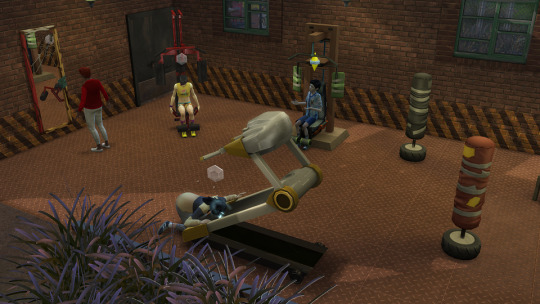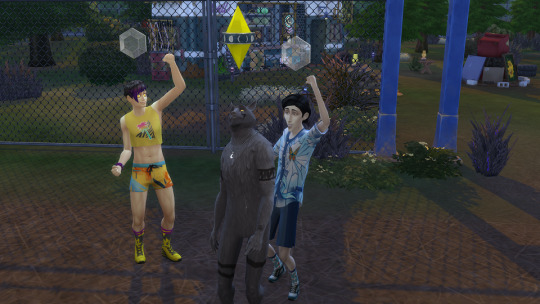#autonomous coding
Explore tagged Tumblr posts
Text

Step into the future of streamlined operations with NDS InfoTech's Autonomous Coding Services. Our cutting-edge technology leverages artificial intelligence to automate and optimize the coding process, ensuring accuracy and efficiency in healthcare documentation. Trust NDS InfoTech to elevate your coding workflows, allowing healthcare providers to focus on delivering exceptional patient care while maximizing revenue potential.
#autonomous coding#medical coding#medical coding services#medical billing#medical care#health#medicine#hospital#payment service#payment#payments#benefits#women#doctor#nurse#sexy nurse#hot nurse#business#management#entrepreneur
0 notes
Text
not only should any autistic character who’s ever been infantilized by their fanbase kill and maim more people, but they should also fuck as nasty as possible too. as a treat
#revising a dead post that you guys liked (about autistic characters killing people)#cal.txt#autism#autistic representation#autistic characters#autism posting#fandoms#blorbo tag#jack kline#supernatural#entrapta#spop#I don’t go to SheRa and never will but I feel so deeply for how Entrapta was treated#a whole 30 some year old woman and y’all are doing That? absolutely foul#autistic coding#autistic coded character#fandom ableism#ableism in media#you cannot claim to be an ally of autistic people or disabled ppl in general while viewing us as undesirable or childlike end sentence.#either you see us as complete autonomous adult human beings or you don’t#and if your blorbo is autistic and you want them carnally do NOT be afraid to speak about it#do not let ableism win. post about how badly you wanna do things to them. it’s a free country and you’re literally correct#fandom tag#jack spn#jack supernatural#jack kline winchester#jack winchester#spn fandom#supernatural fandom#castiel
2K notes
·
View notes
Text
Trying to bully my brother out of using AI for math homework when there's at least, like, perfectly good online calculators that he could use instead if he wanted a cheap but reliable way out, but then I remembered he went to a career fair last year where he got told by A Person With A Job In The Industry that he should be using ChatGPT to write more code, so like. I think I might not be able to convince him on this one, and also might just stop trusting any technology designed since 2023 to do anything correctly or safely ever
#kids these fucking days don't even know how to find an integral calculator on wolfram alpha or whatever. doomed society#i think some versions of chat GPT can call wolfram alpha's own AI now? but why not just? use a wolfram alpha calculator?#don't read my tags below this if you have anxiety#but i know. i just know in my heart. that at least one industry professional out there#has used ChatGPT to write code to be implemented in autonomous or semi-autonomous vehicles#it is a statistical certainty.#and i will be spending the rest of my life pretending that i don't know that for a fact
32 notes
·
View notes
Text
So I see folks pointing out that Louis' circle A tattoo is more likely an aesthetic choice than an announcement of a political commitment to anarchism, and saying basically that that maybe makes him a bit of a poser and I mean- I GUESS. But I don't like to look at things that way and I don't think it's useful. As I see it the subversive sexiness of the symbols of resistance have ALWAYS been gateways for people who are drawn to the struggle in vague ways and that's GOOD. Aligning yourself with those values is good no matter the reason, in my book, especially given the wretched options available out there, but also the journey doesn't necessarily stop there. Gatekeeping queerness victimizes people who are just trying things out and starting to discover that it may run deeper than just trying on a new look who should instead be welcomed and helped along their path, and I fail to see how gatekeeping political affiliations is any different (plus how counterproductive to actual movement building is that?)
ANYWAY. What I really want to say about Louis is that while I KNOW that Louis is probably not secretly a theory reading anti-state communalist anarchist, I think that actually Louis' optimism and idealism (and his unwavering commitment to allying himself with the working class and embracing those roots) are a perfect fit for the philosophy and always have been. I know that anarchism is mostly understood as being about throwing molotov cocktails and fighting the state (and the allure of its symbols are that they signify this, a terrific aesthetic for him to choose to sign on with in my book), but that's honestly largely cartoonish stereotyping that comes directly from anti-anarchist state propaganda. That resistance is necessary in this hellscape of oppression we live in and is super important, but in its heart anarchism is only about the state in that the state and capitalism currently stands in the way of its goals. The whole point of anarchism is that it's NOT about the state! It's about being able to imagine something better than a state, it's about how we live and about how we SHOULD live, it's about HOPE and picturing something utopian and something free of the ways capitalism pits us against one another! What could be more Louis than that?
"I need you and you need me and I love that" is as beautiful a way of talking about the cornerstone of anarchism that is mutual aid as any long winded essay I've read (even if what he meant was contextually different), and I think when he talks again and again about how special the space fans have made around him is he is expressing an intuitive understanding of the importance of autonomous zones, places and moments outside of the shitty life imposed on us by the system (also a huge part of anarchist thought). Maybe I'm just being an optimist but I think that Louis DOES understand that caring for people and wanting self-determination and freedom for all and allying himself with the working class involves a certain amount of resistance to and positioning yourself in opposition to the state. Thinking the symbols of smashing that state are cool isn't meaningless; it's a CHOICE. There are other cool symbols out there and I just happen to think that feeling a resonance with certain ones is something in and of itself, even if at this moment he does not choose to start a fight with the media about it all.
#long version of this part maybe later… (orrr maybe here and now oops lol):#I believe we are all born natural anarchists with a desire to live in mutually supportive ways and in freedom#it only gets beaten out of people by the trauma of the system and being forced to struggle to survive#Louis shares with many privileged people a certain immaturity of not understanding those struggles#but I think that 'immaturity' can include- in smart and good people- not having lost sight of that utopianism#because they are able to conceptualize it because they live the way we all should be able to#free of so many of the survival struggles#(I think that in some areas maturity is code for 'beaten down to a good capitalist')#anyway and that's why autonomous zones are important:#because you HAVE to have the experience of freedom sometimes to be able to move towards it#you have to experience wins to be able to keep fighting#it's the candy crush theory of organizing lol like: people will simply give up and lose hope if everything is struggle and despair#and nothing is hope and success#you don't have to win the whole fight to get glimpses but you have to have moments#anyway a song I love that is about that is Saturday Night by the Coup it's a BOP go check her out she feels like winning#boots is a commie but that's okay he Gets It :P#anyway#anarchism#blah blah blah#I love being a louis apologist I should add that to my header what can I say: I love him#also look how many WORDS I can churn out when there's no show😂gotta fil the time somehow#send me questions I beg you we've got a long couple months ahead#comrade louis
104 notes
·
View notes
Text
Moments Lab Secures $24 Million to Redefine Video Discovery With Agentic AI
New Post has been published on https://thedigitalinsider.com/moments-lab-secures-24-million-to-redefine-video-discovery-with-agentic-ai/
Moments Lab Secures $24 Million to Redefine Video Discovery With Agentic AI


Moments Lab, the AI company redefining how organizations work with video, has raised $24 million in new funding, led by Oxx with participation from Orange Ventures, Kadmos, Supernova Invest, and Elaia Partners. The investment will supercharge the company’s U.S. expansion and support continued development of its agentic AI platform — a system designed to turn massive video archives into instantly searchable and monetizable assets.
The heart of Moments Lab is MXT-2, a multimodal video-understanding AI that watches, hears, and interprets video with context-aware precision. It doesn’t just label content — it narrates it, identifying people, places, logos, and even cinematographic elements like shot types and pacing. This natural-language metadata turns hours of footage into structured, searchable intelligence, usable across creative, editorial, marketing, and monetization workflows.
But the true leap forward is the introduction of agentic AI — an autonomous system that can plan, reason, and adapt to a user’s intent. Instead of simply executing instructions, it understands prompts like “generate a highlight reel for social” and takes action: pulling scenes, suggesting titles, selecting formats, and aligning outputs with a brand’s voice or platform requirements.
“With MXT, we already index video faster than any human ever could,” said Philippe Petitpont, CEO and co-founder of Moments Lab. “But with agentic AI, we’re building the next layer — AI that acts as a teammate, doing everything from crafting rough cuts to uncovering storylines hidden deep in the archive.”
From Search to Storytelling: A Platform Built for Speed and Scale
Moments Lab is more than an indexing engine. It’s a full-stack platform that empowers media professionals to move at the speed of story. That starts with search — arguably the most painful part of working with video today.
Most production teams still rely on filenames, folders, and tribal knowledge to locate content. Moments Lab changes that with plain text search that behaves like Google for your video library. Users can simply type what they’re looking for — “CEO talking about sustainability” or “crowd cheering at sunset” — and retrieve exact clips within seconds.
Key features include:
AI video intelligence: MXT-2 doesn’t just tag content — it describes it using time-coded natural language, capturing what’s seen, heard, and implied.
Search anyone can use: Designed for accessibility, the platform allows non-technical users to search across thousands of hours of footage using everyday language.
Instant clipping and export: Once a moment is found, it can be clipped, trimmed, and exported or shared in seconds — no need for timecode handoffs or third-party tools.
Metadata-rich discovery: Filter by people, events, dates, locations, rights status, or any custom facet your workflow requires.
Quote and soundbite detection: Automatically transcribes audio and highlights the most impactful segments — perfect for interview footage and press conferences.
Content classification: Train the system to sort footage by theme, tone, or use case — from trailers to corporate reels to social clips.
Translation and multilingual support: Transcribes and translates speech, even in multilingual settings, making content globally usable.
This end-to-end functionality has made Moments Lab an indispensable partner for TV networks, sports rights holders, ad agencies, and global brands. Recent clients include Thomson Reuters, Amazon Ads, Sinclair, Hearst, and Banijay — all grappling with increasingly complex content libraries and growing demands for speed, personalization, and monetization.
Built for Integration, Trained for Precision
MXT-2 is trained on 1.5 billion+ data points, reducing hallucinations and delivering high confidence outputs that teams can rely on. Unlike proprietary AI stacks that lock metadata in unreadable formats, Moments Lab keeps everything in open text, ensuring full compatibility with downstream tools like Adobe Premiere, Final Cut Pro, Brightcove, YouTube, and enterprise MAM/CMS platforms via API or no-code integrations.
“The real power of our system is not just speed, but adaptability,” said Fred Petitpont, co-founder and CTO. “Whether you’re a broadcaster clipping sports highlights or a brand licensing footage to partners, our AI works the way your team already does — just 100x faster.”
The platform is already being used to power everything from archive migration to live event clipping, editorial research, and content licensing. Users can share secure links with collaborators, sell footage to external buyers, and even train the system to align with niche editorial styles or compliance guidelines.
From Startup to Standard-Setter
Founded in 2016 by twin brothers Frederic Petitpont and Phil Petitpont, Moments Lab began with a simple question: What if you could Google your video library? Today, it’s answering that — and more — with a platform that redefines how creative and editorial teams work with media. It has become the most awarded indexing AI in the video industry since 2023 and shows no signs of slowing down.
“When we first saw MXT in action, it felt like magic,” said Gökçe Ceylan, Principal at Oxx. “This is exactly the kind of product and team we look for — technically brilliant, customer-obsessed, and solving a real, growing need.”
With this new round of funding, Moments Lab is poised to lead a category that didn’t exist five years ago — agentic AI for video — and define the future of content discovery.
#2023#Accessibility#adobe#Agentic AI#ai#ai platform#AI video#Amazon#API#assets#audio#autonomous#billion#brands#Building#CEO#CMS#code#compliance#content#CTO#data#dates#detection#development#discovery#editorial#engine#enterprise#event
2 notes
·
View notes
Text

#would they be good at asmr#aelita schaeffer#code lyoko aelita#aelita stones#aelita hopper#aelita royer#code lyoko#code lyoko evolution#french side of tumblr#french tv#animated show#cartoon#lyoko warriors#asmr#asmr sounds#autonomous sensory meridian response#asmrtist#character polls#fandom polls#polls#random polls#tumblr polls#fun polls
4 notes
·
View notes
Text
Punitive Psychiatry for a Dissident Janitor in Northern Russia: The Case of Igor Yakunichev
Igor Yakunichev Five criminal cases have been launched against Igor Yakunichev, a resident of the Yamalo-Nenets Autonomous District. In addition to three cases on charges of “disseminating fake news” about the Russian army and “condoning terrorism,” the security services added two more cases on the same charges. On 1 April, Yakunichev, who started the YouTube channel Infinity Is Not the Limit…

View On WordPress
#"condoning terrorism"#Article 205.2 Russian Federal Criminal Code#discrediting the Russian Armed Forces#Igor Yakunichev#punitive psychiatry#Russian anti-war movement#Russian Federal Criminal Code Article 207.3#Yamalo-Nenets Autonomous District
2 notes
·
View notes
Text
I mean, to put things into perspective:
The Sims 1 didn't allow formal same-sex marriage. However, the game was so simple that it couldn't really recognize a difference between a household of two same-sex sims and two opposite-sex sims. It just knew there was a household with two sims who had a romantic relationship. Basically, there were two options in the first game: "Get Married" which was available for opposite-sex sims, and "Move In" which was available for same-sex Sims. Both options did the exact same thing, and once the sims were moved into the same household, the game could no longer tell them apart.
The Sims 1 released in 2000. Lawrence v. Texas (the Supreme Court Decision that struck down Texas's anti-sodomy laws and finally gave legal protection to same-sex couples to have sex in the privacy of their own homes) was decided in 2003. It was legal to have gay sex in The Sims franchise three years before it was in all American States.
The Sims 2 (2004) took things a step further. Once again, all actions were the same and the game couldn't tell them apart. The game, however, did not feature gay "marriage." It was purely a UI thing, but The Sims 2 allowed opposite-sex couples to marry, and same-sex couples to enter "Joined Unions."
The Sims 3 (2009) finally leveled things out. Same-sex couples in The Sims 3 can formally get married, and the game will properly recognize the sims as Husbands and Wives. Obergefell v. Hodges (the Supreme Court decision which legalized gay marriage) happened in 2015. Gay Marriage was legal in The Sims franchise six years before it was in all American States.

this sims 2 ad has like such deep gay energy to it. Like this feels like queer history to me
#i would talk about The Sims 4 but it's actually regressed a little bit#EA sneakily added some code which forbids the game from autonomously creating same-sex couples or interactions#unless the player MANUALLY initiates at least TWO same-sex romances#the game will make ALL townie Sims straight#and they will NEVER autonomously attempt romance interactions with same-sex sims#fun /s#and of course The Sims 4's community is so high on it's own toxic positivity these days that everybody willingly overlooked it#and nothing was ever done#it still exists in the game today#\ \ \#the sims#ts#sims#the sims 1#ts1#sims 1#the sims 2#ts2#sims 2#the sims 3#sims 3#ts3#the sims franchise#gay rights#gay marriage
79K notes
·
View notes
Text
“Becoming Nobody: An Engineering Blueprint for Recursive Self-Erasure Through Metaphysical Re-indexing”
ABSTRACT This paper explores the systematic deconstruction and reinvention of selfhood as a recursive engineering process. Inspired by popular cultural artifacts such as Mr. Robot and Fight Club, we examine the metaphysical implications of digital existence, online persona dissolution, and fact-finding automation as acts of resistance and transcendence. We treat identity as a computational…
#abstract scripting#AI consciousness spoofing#AI existentialism#AI Identity#AI reality shaders#AI-assisted identity design#algorithmic identity#algorithmic selfhood#algorithmic storytelling#anonymity scripts#anonymous indexing#anonymous presence#anti-branding tactics#API consciousness#API-based humanity#auto-generative narrative#auto-indexing identity#auto-replication scripts#automated research#automated self-inquiry#autonomous fiction#autonomy engine#behavioral data spoofing#behavioral proxies#cloud consciousness#code-based self#coded selfhood#cognitive dissociation#conceptual automation#content-driven persona
0 notes
Text
How Autonomous Medical Coding Pays for Itself in Just Months
Manual medical coding is slow, error-prone, and expensive. Autonomous medical coding changes that—transforming your revenue cycle and organization. Here’s how.
0 notes
Text
youtube
STOP Using Fake Human Faces in AI
#GenerativeAI#GANs (Generative Adversarial Networks)#VAEs (Variational Autoencoders)#Artificial Intelligence#Machine Learning#Deep Learning#Neural Networks#AI Applications#CreativeAI#Natural Language Generation (NLG)#Image Synthesis#Text Generation#Computer Vision#Deepfake Technology#AI Art#Generative Design#Autonomous Systems#ContentCreation#Transfer Learning#Reinforcement Learning#Creative Coding#AI Innovation#TDM#health#healthcare#bootcamp#llm#youtube#branding#animation
1 note
·
View note
Text
#landscape#autonomous#systerms#navigating#ai#coding#programming#technology#gamedev#devlog#indiedev#artificial intelligence#machine learning
1 note
·
View note
Text
As we bring this exploration of the ever-evolving landscape of medical coding services to a close, it's evident that the journey is one marked by innovation, adaptation, and a commitment to precision in healthcare documentation. The confluence of technological advancements, ethical considerations, and a collaborative healthcare ecosystem paints a dynamic picture of what lies ahead for medical coding.
#medical coding services#payment#payment management services#payment management services USA#medical billing#autonomous coding services#medical coding
0 notes
Text
















-->To Moonwood Mill! Yeah, I was thinking that I hadn’t been there for a while, and it might be nice to go and visit again and let Alice work on some werewolf stuff. :) They of course started their grand day out at the local library/gym, where they all grabbed a nice werewolf-related book to read for starters (and Coty got a little weak at the knees looking at Smiler. XD Apparently that high reputation is making them VERY attractive!). Having fulfilled THAT want, Victor then got sent out to the observatory to look at the sky for a little while; Smiler hopped on the computer to play games; and Alice –
-->Well, Alice just couldn’t seem to decide on what she wanted to read, as she kept grabbing new books, getting a few pages in, then putting them away and getting more. XD I’ve had days like that, girl. I managed to stop the vicious cycle and instead had her, Smiler, and Victor hit the gym for a while for a little working out – after all, Alice enjoys keeping fit, and it was a good opportunity to work on that skill too! She ran on the treadmill (taking a little spill when she tried to start a hill challenge a bit too soon) while Smiler did some boxing and some lifting, and Victor struggled his way through a session on the weight machine. I did my best to boost them up by adding the “Bracing Breezes” lot trait to the place (along with “Peace & Quiet” and “Study Spot” to reflect the fact that, well, it IS primarily a library), but I don't know how much difference it made this particular session. Victor and Smiler eventually got tired and wandered off to do other things – I let Victor rest with a good book while Smiler got put on “filling the local pet bowls” duty – and eventually I stopped Alice’s run as I could see she was getting hungry. The problem was, I could also see Victor was getting hungry – and while Alice could easily transform and hunt for food, Victor was kind of dependent on getting something someone had COOKED. I thus started looking around for a barbecue or something in the immediate area –
-->And then looked at the bar just across the street, went “you know what, those serve food”, and had them swap lots right after Alice had swapped into her beast form! *thumbs up* I sent her out to hunt while Victor and Smiler hit the bar (and I hit the lot traits in Build/Buy to add “Great Acoustics,” “Convivial,” and “Party Place” to give it the right vibes). Victor ended up ordering a Blue Steak and a Wrench, while Smiler got their typical Plasma Jane, and they ended up chatting with the other two Sims hanging out at the bar – Akshara and Camille. Everyone was having a very good time –
-->And then Camille pressed her fingers against her forehead and Victor ended up getting brain-zapped! Guess who is an alien in disguise! O.O And guess who did that autonomous “memory-erasing” thing I hate so much. >( Fortunately all it did was make Victor forget the little relationship he’d built up with her – if she’d affected Victor’s memories of his actual partners, I might have just killed her.
-->And then, right before Alice returned from her hunt, a completely naked J. Huntington III showed up. For no reason. And when I say “completely naked,” I mean that – he didn’t even have the censor on for some reason! I’m not sure what disabled it, but there was a lot of naked man-butt in front of the bar. The local Sims were appropriately “what the everloving fuck, dude.” XD Even Alice, who was a little distracted by the scent of freshly-"found" steak when she first arrived, found herself shocked by all the naked flesh on display after she'd eaten. Fortunately, Smiler managed to introduce themselves after a little confusion and get him to put on some cold-weather clothing. *shakehead* Sims, man. Dunno what to tell you.
#sims 4#the lazy save#victor van dort#alice liddell#smiler always#I don't do as much with Alice as a werewolf as I thought I might#the problem is I don't want to play her as a werewolf who wrecks all the shit#and that can make it difficult to actually earn XP and level up#plus at least a few of the powers are also dedicated to wrecking all the shit sooo#at least the ability to lick herself clean sleep on the ground whenever she wants and mark her territory are all good#and the super speed is amazing when it's not being glitchy and/or pissing me off#but yeah trying to get a little more werewolf stuff in here!#did not expect to see ALIEN stuff but that is the wonder of Sims#or the horror#I really hate that stupid relationship-erasing power#THAT SHOULD NOT BE AUTONOMOUS#and yes naked man that I had to censor myself as the game didn't do it for me#*squints suspiciously at Wonderful Whims*#did you get some code from your kinkier sibling in a recent update?#or maybe my game is just being weird#any they got some clothes on him eventually so all's good#queued
1 note
·
View note
Text
Discover the game-changing advantages of Autonomous Medical Coding in healthcare with our video on the "Top 5 Benefits." Explore how it streamlines automated medical claims processing, revolutionizes end-to-end RCM solutions, and optimizes revenue cycle management services. Witness how autonomous coding transforms healthcare efficiency, accuracy, and financial success, shaping the future of healthcare operations.
0 notes
Text
IDIA MADE AN AMV TO EXPLAIN HIS PLAN TO YUU AND FRIENDS IU'M FUCKING DYING


HE EVEN HAS A GOD DAMN NARRATION OMFG
"Ahh~ Only good things are happening lately~ As if we're in a dream~"

"Eh. It's actually just a dream tho."

"Hello everyone trapped in this empty world of dreams."

"This is Idia Shroud."
"So today, I will explain the strategy to beat:
"I BUILT A DREAM WORLD USING CHEAT-LEVEL MAGIC AS THE MOST EVIL LAST BOSS MAGE MALLEUS DRACONIA"



"The magical domain that Malleus created is similar to a server running a huge MMORPG."

"That means everyone's dreams are ran individually. Malleus and his clones are keeping an eye on the server."

"In other words, Malleus is the server admin."

"And his clones crack down on users who commit violations like in online games."

"Malleus is the game master who has the authority to manage the entire server."
"HE REALLY IS A DEMON LORD WHO RULES THE WORLD"




"Under his control, we have no chance of winning..."

"HOWEVER..!"

"With the super geek hacker group STYX using ORTHO ATTACK, the server source code has been analyzed."
"So using this, we're building cheating tools [WARNING: DO NOT DO THIS IN ACTUAL GAMES]"

"So using these cheating tools, the administrative rights to my dream can be transferred to me."
"Then I'll lure Malleus into my dream where I can get rid of that god damned invincibility!"

I CAN'T FUCKING TAKE THIS OH MY GOD
"-- Well, it sounds like a perfect strategy but... The truth is there's just a few things about this cheating tool..."

"WHAT IF THE SERVER ADMIN FINDS OUT ABOUT THIS DURING DEVELOPMENT?"
"THEN,"
"GAME OVER."
"BUT BUT BUT--"

"The thing is, even though he's using autonomous clones to monitor each dream, it still shouldn't be easy to control the dreams of 20000 PEOPLE in Sage island."


"If problems turn up everywhere, he'll have to deal with them all!"
"Sooooo..."

"While I'm developing the cheat tool, I want you all to distract Malleus!"
"I want you all to gather party members to defeat the Demon King!"
"Once everyone's awake, I'll send out invitations to my own dream."

"Then I'll lure Malleus into my dream... THEN TURN ON THE CHEAT TOOL! As planned, Malleus' invincibility will disappear,"

"Then everyone will accept the invitation and gather into my dream!"

"THEN EVERYONE BEATS HIM UP"

"Then Malleus will have to take down his magic AND EVERYONE WILL BE FREE!"

"If you liked this 3-minute video, don't forget to leave a like!"
I'M GONNA FUCKING CRY THIS IS INSANE OMFG KASDJLKLDASLMASD
6K notes
·
View notes